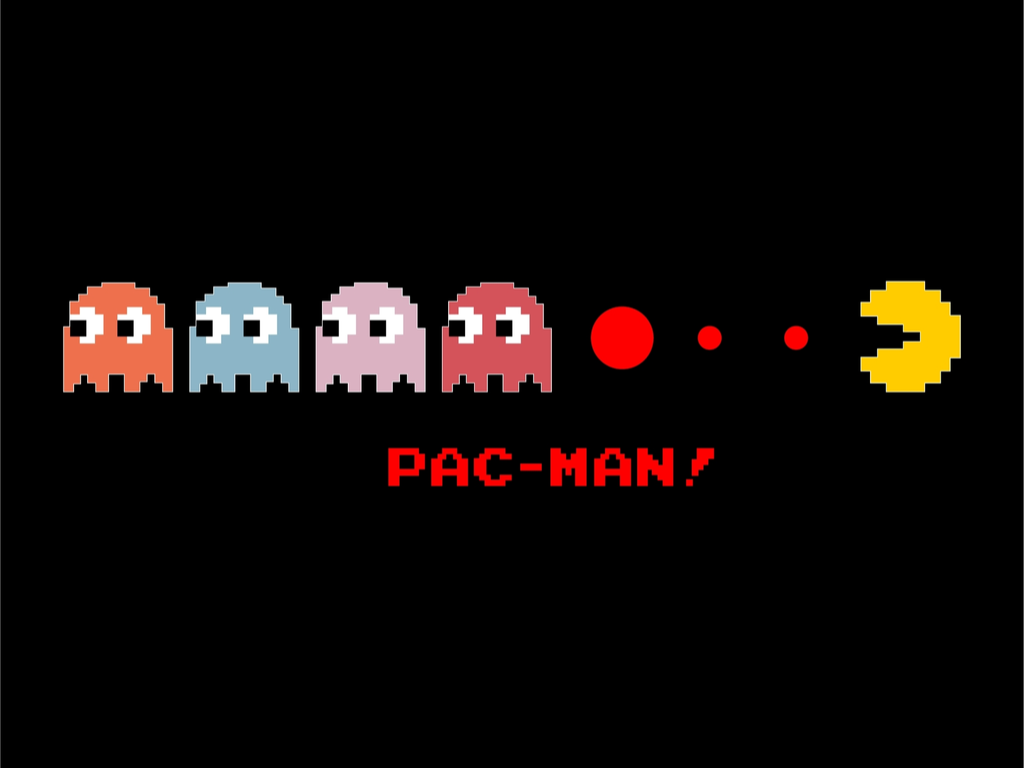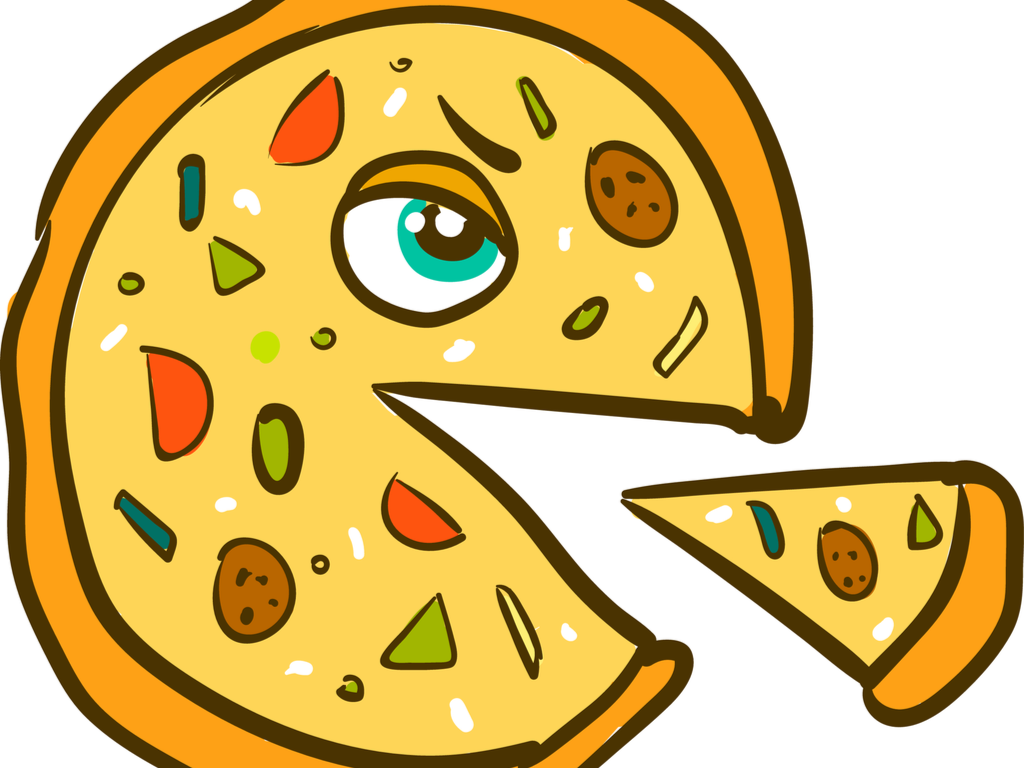Last Updated on January 25, 2024 by Gamesver Team and JC Franco

Let’s play a game, where I give you a description of a game, and you guess the name. Sounds fun? Guess the name of the game where colorful ghosts constantly follow the title character. To protect himself, he needs to be a compulsive eater making him larger than his original size. He has a bright complexion and a big mission ahead of him…
I could go on to write an essay, but you’ve probably already guessed what the game is. The game I am talking about is Pac-Man, the social phenomenon that started in 1980. When it comes to Pac-Man, there are several myths, legends, and dark stories surrounding the game, and today we’re going to take a closer look at what they are.
Even after many decades, Pac-Man needs no introduction to the average person, making it the most memorable and lovable video game character of all time. The game gave the gaming industry a new dimension. Without further ado, let’s delve into some interesting facts and tit-bits below.
These are 16 myths, legends, and dark Stories surrounding Pac-Man:
1. Pac-Man, a slap in the face to violence.
It’s not a myth or a legend that Pac-Man was a slap in the face to violence. In fact, it’s quite true that Pac-Man was designed to be the exact opposite of regular games in that day and age.
In the late 1970s and early 1980s, the gaming industry indulged in dark themes like war, shooting, and killing. Violent games like Space Invaders and Galaxian were very successful. Not just the Japanese gaming industry, other countries were following the same trend. Iwatani, the designer of Pac-Man, decided against it.
Iwatani wanted nothing to do with the violent theme. On the contrary, he thought about a simple and cheerful theme. After much thought, he came up with a game based on eating. Despite the huge risk and sailing against the wind, he was clear about his goal.
2. Pac-Man might have been a marketing scheme.
Here’s a possible dark story for you…word is that Pac-Man wasn’t just a game; it was an entire marketing ploy designed to get people spending their money. Pac-Man became a household name within a short time. It smashed all the previous records, making it’s own, and in its heyday, the merchandise was selling like crazy.
Pac-Man bedsheets, pillows, clothing, kids’ products, and even toilet seats became a common picture. Everyone wanted to boost their sales using Pac-Man. People would buy a product without necessity just because it had Pac-Man printed on it.
3. Toru Iwatani wasn’t a trained programmer.
Myth or truth, the creator of Pac-Man wasn’t really trained for the job? You guessed it; it’s the truth! Toru Iwatani was 22 years old when he started to work for Namco. Crazy it might be, but he was not into creating video games. Iwatani admitted that he was not trained enough.
At first, he anticipated working using pinball machines. However, it was not meant to be. Eventually, he designed Bomb Bee, Cutie Q (1979), and the paddle game Gee Bee (1978). He might have lacked training, but he ended up creating a masterpiece. Wouldn’t you agree?
4. The pizza inspiration is only half true.
There is a misconception about how the designer came up with the shape of the main character. The reality is that pizza inspiration is only half true. Iwatani himself said in an interview that he got the idea while eating pizza. He was hit with the idea when he noticed a missing slice at the pie. The shape of a half-eaten pizza stuck with him, giving him the inspiration for Pac-Man’s particular shape.
But in 1986, he told the whole truth. He explained that the Japanese character for the mouth is square-shaped, which was Pac-Man’s initial idea. He just made it circular, which made it appear like pizza. Is it a myth, or is it true? No one can tell.

5. Enemies became heroes.
Even though Iwatani was responsible for Pac-Man’s creation, he was not the one who blew life into it. The job was done by four people, including programmer Shigeo Funaki and sound designer Toshio Kai. The development period was about 18 months, which was a long time compared to other games’ development duration at that time. The main attraction of the game is the enemy AI.
Pac-Man would have been just another game without the ghosts being so interesting and unpredictable. They could act based on players’ pretty amazing actions. People always came back for more as the enemies were that challenging, creating a buzz for them. The game became a massive success thanks to the enemies.
6. The gameplay and the ghosts mimic comic book characters.
Apparently, the power pellet concept came from Popeye. As we remember, Popeye ate spinach to boost his strength so he could defeat Bluto; likewise, the creator took inspiration from there, making a power pellet that allowed him to eat the ghosts too. The cute and colorful ghosts were created in the image of Casper. This could be a myth – what you believe is up to you!
7. Creators could not taste direct profit.
There was no financial reward for the game designers and programmers other than their regular salaries. As a result, the designers or programmers could not enjoy a direct profit. They were just employees regardless of how much they contributed to making millions in profit for the business.
8. The success of the game turned the tables on a hostile takeover.
Pac-Man made a mark on an international level, a perfect definition of wild success. It grossed over USD 1 billion within its release, making it the world’s bestselling arcade game of all time. Not to mention that Pac-Man merchandise was selling like hotcakes. Pac-Man earned billions for its company. But before Pac-Man, the company was not doing well and was actually on the verge of a hostile takeover.
Instead, the tables turned, and Pac-Man ate away the hostile company attempting to acquire Namco. Doesn’t it sound familiar? Think of Pac-Man eating power cookies to overcome the enemy…food for thought, isn’t it?
9. Namco wanted identical ghosts.
Can you imagine Pac-Man’s ghosts all being the same color? Now that you already know the ghosts, it’s probably an inconceivable concept. If Iwatani did not protest against the idea, then the ghosts would have ended up identical. The idea was for all the ghosts to be identical and red.
The designer refused to create all the ghosts the same and actually took the concept to the game’s testers to see what they thought. Everyone voted against the given order, and thus all the ghosts are different!
10. Being the first to introduce cutscene.
Before Pac-Man, games did not have a cutscene. Pac-Man did the honor of introducing it to the gaming world. Pac-Man’s action is sometimes disturbed by cartoonish interludes where he gets to chase a terrified ghost across the screen. As the interludes did not add much to how the game progresses, the programmers wanted to drop the idea, but that never happened.
11. Cookies were replaced by tiny dots.
Pac-Man moves while munching the tiny dots called snack pellets along the way. In the beginning, they were cookies, but they got replaced by tiny dots. The power cookie became a larger pallet that helps to eat the ghosts. If you thought that Pac-Man having cookies is simply a legend, know that it is not! It’s the absolute truth.
12. Aimed to attract women and young people.
It isn’t news that the gaming industry was more male-oriented back in the day. The reason behind this is simple; games were designed to appeal to a male player. Women had little interest in the games being released, so Iwatani decided to change that culture by developing games that bring more female and young people to arcades.
So, he created Pac-Man so it would appeal to the female population. It’s not a myth or a legend that Pac-Man was designed for girls – it’s the truth.
13. Pac-Man can be an addiction.
Google came up with an idea in 2010 to celebrate Pac-Man’s 30th birthday. They placed a playable version of the game on its home page. But, according to a study, the kind gesture wasted 4.8 million working hours. What does this tell us? It’s not just a dark story that Pac-Man is an addiction; it might just be the truth.
14. You cannot play more than level 256.
If you want to hear a dark story about Pac-Man, here it is! Pac-Man is a never-ending game, but the irony is you cannot get past level 256. The game has a bug that makes it impossible to play further. The highest you can score is 3,333,360 points.
15. Pac-Man’s huge scale success was not expected.
Many people think that it’s a mere myth that Pac-Man was never designed for the type of success it got. Well, it’s not a myth! It’s actually true.

As mentioned before, the designer took a huge risk by going against the trend of violent games by making a simple game suited to women. At the time, the designer and his team didn’t’ expect much. They were sure to attract the female audience with the game, and they expected that, but the response it got was beyond what they had in mind.
In Japan, Pac-Man was doing good, but it became a massive hit after reaching North America. It broke records one by one, leading to global domination.
16. Each ghost had precise instructions.
Is it just legend that each of the ghosts has its own agenda? Certainly not! It’s the truth! The game was programmed in a way so that each ghost has its agenda. Blinky, the red one, persistently chases you while the pink ghost positions itself at a point that’s just 32 pixels in front of Pac-Man’s mouth. Inky also positions itself at a similar spot.
On the other hand, Clyde moves how he wants. What makes it more interesting is that the ghosts continuously change direction. Pay attention to the ghosts the next time you play and see for yourself.
Bottom Line
The bottom line is Pac-man is and was one of the most popular games with millions (if not billions) of fans worldwide, and now you have a bit more insight into the commonly known myths, legends, and dark stories about the game.

